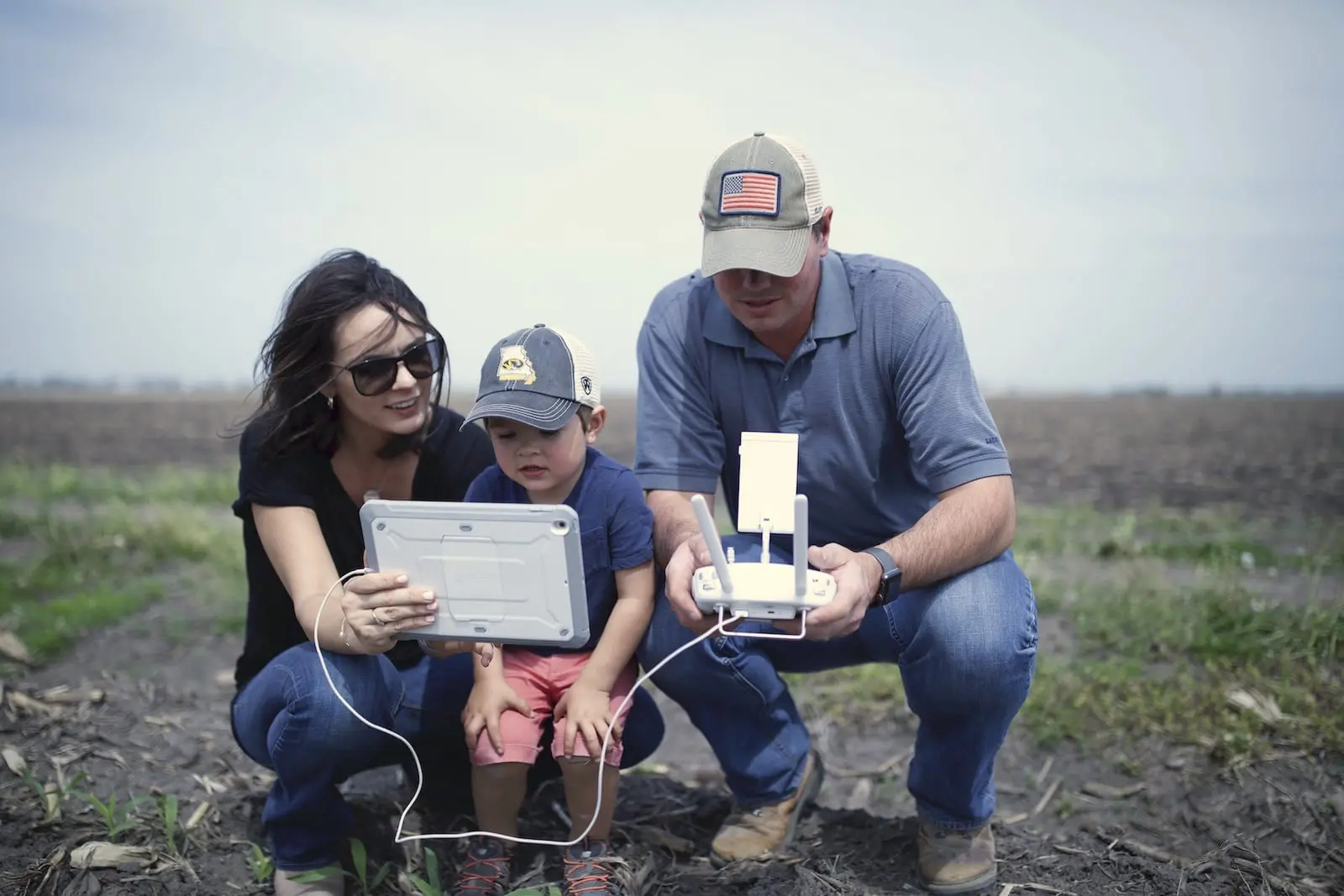Ag data plays a large role in sustainability practices — and U.S. soybean farmers are ensuring their operations are up to par.
Data has transformed sustainability efforts throughout the ag industry — especially on the farm.
Farmers have layers upon layers of data at their fingertips. Putting that data to work keeps farmers meeting the sustainable needs of their end-use customers.
Sustainability in agriculture tops the priority list. And the industry has the greatest leaders running the show — U.S. soybean farmers. Intentionally implementing sustainability practices, U.S. soybean farmers start and end with analyzing their on-farm data. The industry and consumers have expectations of the supply chain, and farmers understand their data is the map to address those needs.
Connected in more ways than one
Farmers are running highly advanced, connected equipment with various technologies to produce high-quality, sustainable U.S. soybeans. Technology such as variable rate applications and GPS-guided equipment are becoming increasingly significant tools in data management. For example, GPS technology in farm equipment allows farmers to navigate to various problematic areas of the field and create maps. Farmers make informed management decisions by overlaying other data, including yield, seed types and planting rates.
Farmers combine these insights, like field health regarding lime and phosphorus levels, with additional information such as pesticide and fertilizer application rates. The integrated data helps them lay out their planting strategy for the coming season. With data, farmers can select the best seeds and right planting rate to ensure enough seed is planted per acre for each field so they can sustainably grow the highest-quality crop.
“We are continually seeing more and more third-party data collection sites that allow us to set up all of our equipment to talk to each other,” said Meagan Kaiser, farmer from Bowling Green, Missouri.
Usable, connected data is the key for farmers.
“That’s an area U.S. Soy has been working on — to figure out how we make it easier on producers to overlay all of this data and make better management decisions,” said Kaiser, who grows soybeans and corn.
Farmers also use this data to put together nutrient plans for the coming year. Their data-informed management program ensures they apply the right inputs in the correct amounts, on the appropriate location. Over-applying isn’t only environmentally irresponsible — it’s financially wasteful.
U.S. soybean farmers understand their sustainability practices — informed by on-farm data — benefit the environment, the soil, the crops, their operations and their customers.
Worth the investment
In Frankfort, Indiana, David Beard and his family invest in technology to help them continue improving the sustainability of their farm. Investments in drone technology, nutrient mapping and many other data-capturing tools allow the Beard family to serve end-user customers better. And Beard said it’s worth the effort.
“It’s all about finding a balance between maximizing your farmland’s potential and being environmentally responsible,” Beard said. “Collecting and analyzing data on our farm allows us to be more efficient, which means we’re saving money while reducing our environmental impact.”
Climb into any cab on a farm, and you’ll find monitors for measuring everything from fertilizer application to varieties harvested. Beard analyzes the data to determine how to make the most of their acres.
Farmers gather soil samples and have them tested in a lab to ensure soil nutrients are balanced before planting. This data shows organic matter in the soil and measures areas needing improvements from the previous year. Farmers are also mindful of their soil moisture, especially those with irrigation systems.
Ron Stech, U.S. soybean farmer from Osmond, Nebraska, uses data and mobile technology to control his intricate irrigation system and conserve water usage.
“We’re using moisture probes, which determine soil moisture, in our irrigation in an effort to better conserve moisture and use our water more wisely,” Stech said. “Many of our irrigation systems are connected to our phones. We can manage these systems to speed them up, slow them down, shut them down, start them — whatever the case may be that day.”
Sustainability all year round
Sustainability is a mindset. Farmers use best management practices throughout the year, not just while the crops are in the ground. The Beards consult with an agronomist and monitor their progress all season.
“Traditional thinking would be to make sure you put at least enough nutrients out to meet yield goals, but we take a different approach,” Beard said. “We only apply nutrients needed for a specific percentage of our yield goal for a field. After that, our scouting program helps us get our crops the right amount of nutrients at the right time.”
Soil sampling in the fall and spring ensures the soil has adequate nutrients for next year’s crops. Most farmers will soil sample either in the fall, right after harvest, or in the spring, right before planting.
The family takes a similar approach to pest management, which includes weeds, insects and diseases, by scouting fields for weed breakouts and insect and disease issues. Sprayers don’t hit the fields to apply an insecticide or fungicide unless an economic threshold has been met.
“Our customers expect us to be sustainable. And it makes financial sense to be responsible with the tools we have, too,” Beard said.
U.S. Soy helps make whatever you make more sustainable. Steps to improve sustainability are taken throughout the soy value chain to create an environmentally-friendly product for end users to sell to consumers. Farm practices such as precision agriculture, pesticide-resistance management, reduced tillage, buffer strips and more all positively impact environmental goals including water quality, soil health and greenhouse gas emissions.
Visit unitedsoybean.org/sustainability-report to download the Soy Sustainability Report.
